Gayatri and Maha-mantra
Mahanidhi Madan Gopal Das
kṛṣṇa-mantra haite habe saṁsāra-mocana,
kṛṣṇa-nāma haite pābe kṛṣṇera caraṇa
Sri Caitanya Mahaprabhu said, “The kṛṣṇa mantra (gopala mantra) gives one freedom from material existence. And kṛṣṇa nama (the Hare Kṛṣṇa maha-mantra) delivers one to the lotus feet of Kṛṣṇa.” (Caitanya Caritamrita Ādi 7.73)
In this verse, Lord Caitanya describes the effects of chanting the eighteen-syllable gopala mantra and the Hare Kṛṣṇa maha-mantra. Of the two mantras, Sri Jiva Gosvami emphasizes chanting the Hare Kṛṣṇa maha-mantra in Bhakti Sandarbha 284: “Mantras are actually composed of the names of the Supreme Lord. Mantras are distinct from the name because they include the word “namah” [or svaha], and have special powers that are given by the rsis or the Lord Himself. The holy names of the Lord, however, in themselves, being independent, can bestow the higest goal of life, Kṛṣṇa-prema. Thus the names of Kṛṣṇa are more suitable than mantras.”
In Kṛṣṇa Samhita, Srila Bhaktivinoda Thakura describes the various mantras given to liberate one in the different yugas. In Satya, Treta and Dvapara yugas these mantras, called tāraka-brahma-nāma, addressed the Supreme Lord with feelings of awe and reverence invoking His divine power, majesty and protection (aisvarya-bhava). The tāraka-brahma-nāma for Kali-yuga is the Hare Kṛṣṇa maha-mantra, a selfless call for loving service.
In the Gaudiya conception, samsara-mocana, or liberation means to realize one’s svarupa. At this stage, the Brahma Gayatri and the gopala mantra retire, but chanting Hare Kṛṣṇa continues to deliver one to the lotus feet of Kṛṣṇa (kṛṣṇa-carana), in the spiritual world. This is the final stage of spiritual evolution wherein one attains his vastu siddhi, (pure spiritual form), and engages in Kṛṣṇa’s eternal service.
Whether one is in Kṛṣṇaloka or the material world, chanting Kṛṣṇa’s holy name is the eternal function of the soul. In the material world, chanting Hare Kṛṣṇa is the primary activity for purification and spiritual elevation. Everything else is auxiliary or supportive of the main service of chanting Hare Kṛṣṇa. Upon entering the spiritual world, however, chanting the holy name will be in the background, helping and energizing. Serving Radha-Govinda will be in the foreground, distinct and most important. For example, when the gopīs churn fresh yogurt for Kṛṣṇa’s butter, they simultaneously sing His glories while keeping time with their bangles and waistbells.
An excerpt from the book Art of Chanting

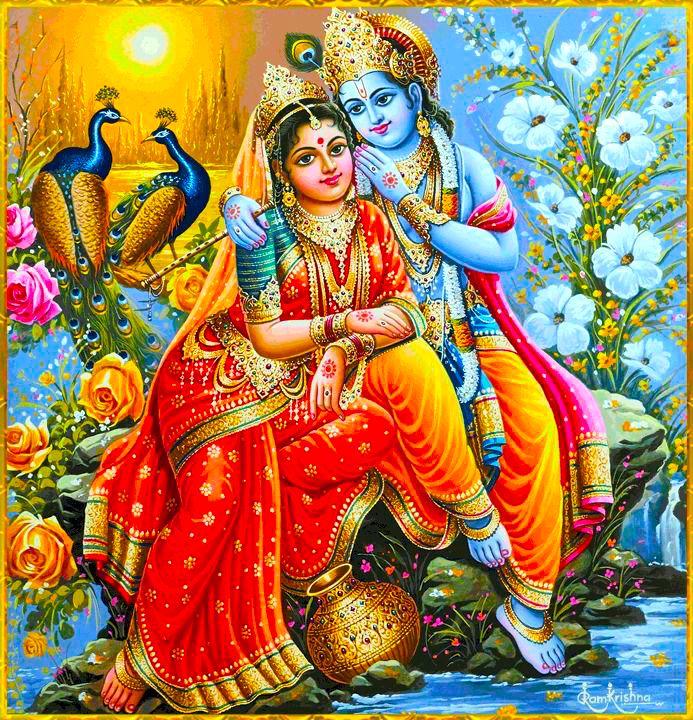
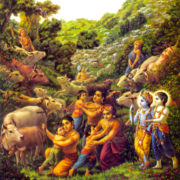
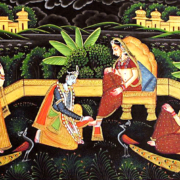


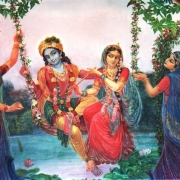
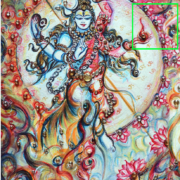
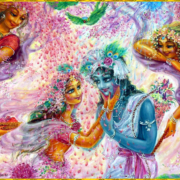


Leave a Reply
Want to join the discussion?Feel free to contribute!